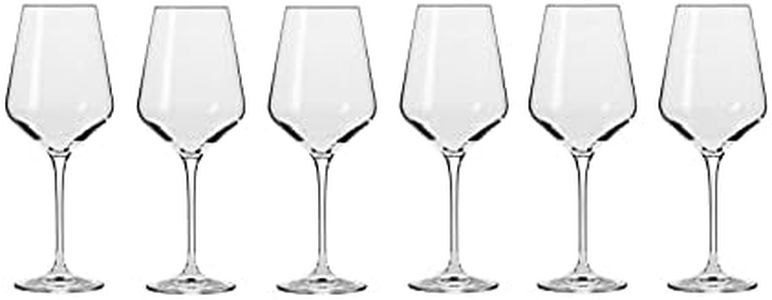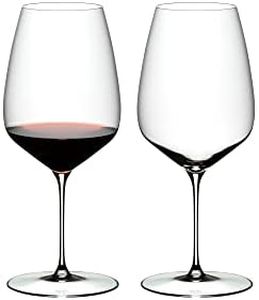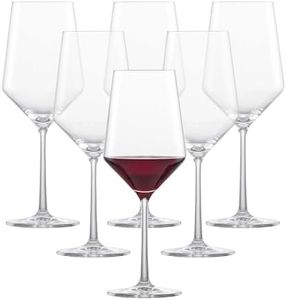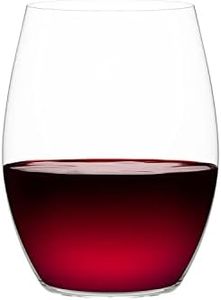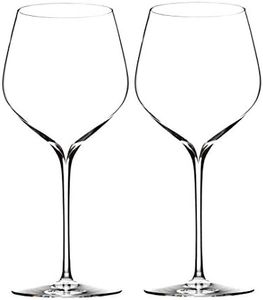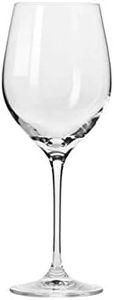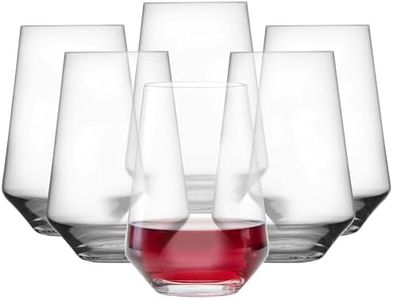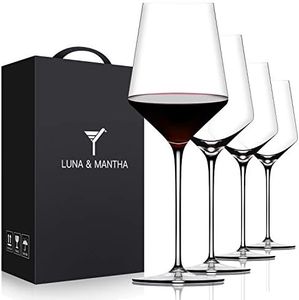We Use CookiesWe use cookies to enhance the security, performance,
functionality and for analytical and promotional activities. By continuing to browse this site you
are agreeing to our privacy policy
10 Best Cabernet Glasses
From leading brands and best sellers available on the web.Buying Guide for the Best Cabernet Glasses
Choosing the right Cabernet glasses can elevate your wine drinking experience, highlighting the flavors and aromas that make Cabernet wines so enjoyable. When searching for the perfect glass, consider factors that influence both your enjoyment and the functionality of the glass. Understanding the shape, size, and construction of wine glasses will help you select a set that best fits your needs and preferences.Bowl Size and ShapeThe bowl of a Cabernet glass is typically large and spacious, allowing the wine to come into contact with plenty of air. This helps the robust aromas and flavors of Cabernet wines fully emerge. Bigger bowls are designed for full-bodied red wines, enabling you to swirl the wine and release its bouquet. Smaller bowls, on the other hand, are best for lighter wines and may suppress the characteristics of a bold Cabernet. To pick the right one, think about what wines you usually drink—if you love bold reds, a large-bowled glass will let you enjoy all their complexities.
Rim DiameterThe diameter of the rim can impact how the wine flows onto your palate, directing it to the right part of your tongue. A slightly tapered, not overly flared rim concentrates the wine's aromas, improving your tasting experience. If the rim is too wide, aromas can dissipate quickly; too narrow, and you lose the ability to enjoy the wine’s bouquet. Look for a rim that is large enough to comfortably drink from and that allows aromas to be concentrated towards your nose, which is ideal for Cabernet.
Stem LengthThe stem of a wine glass allows you to hold the glass without warming the wine with your hand. Longer stems are more elegant and functional for keeping your fingers off the bowl, preserving the wine’s ideal temperature. Shorter stems or stemless designs are easier to handle and may be more durable for everyday use. Decide if you value tradition and temperature control—then a longer stem is best—or if practicality and ease of storage matter more—then a shorter stem or stemless glass could suit you.
Glass Thickness and MaterialThe thinness of the glass plays a role in how the wine feels in your mouth and how easily the aromas are released. Thinner glass is considered better for fine wine tasting, but it can be more fragile. Thicker glass is sturdier and can be preferable for regular use. Most wine glasses are made from crystal or glass; crystal can be made thinner and looks more elegant, but glass is often more affordable and durable. Your lifestyle and how often you entertain can guide your choice—pick thinner, finer glass for special occasions or thicker, tougher glass for everyday use.
CapacityCabernet glasses usually have a generous capacity—often 20 to 30 ounces—to allow plenty of room for swirling the wine, even with a standard pour. Using a large glass helps expose the wine to air, which is crucial for bold Cabernets that benefit from aeration. Smaller capacities can be easier to manage but may not provide the same tasting experience. Match capacity to your drinking habits: if you pour larger servings or like to swirl vigorously, opt for a larger glass; if you want something more manageable, pick a medium-sized bowl.

